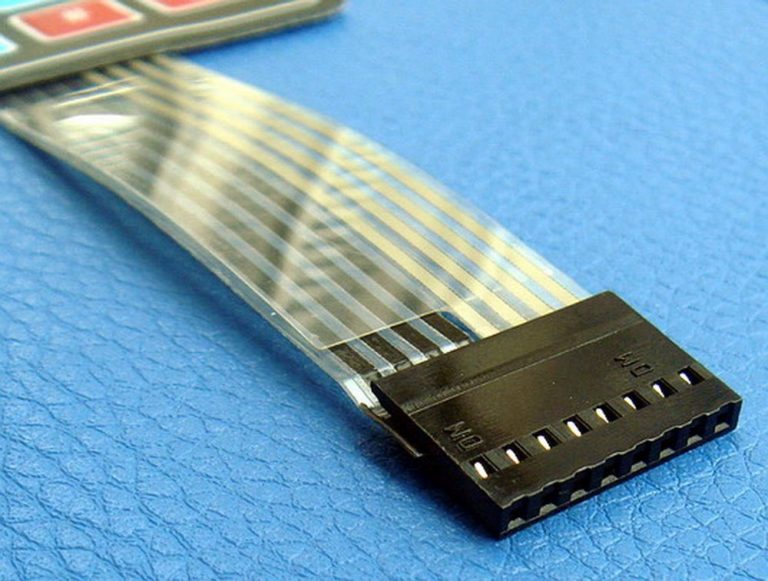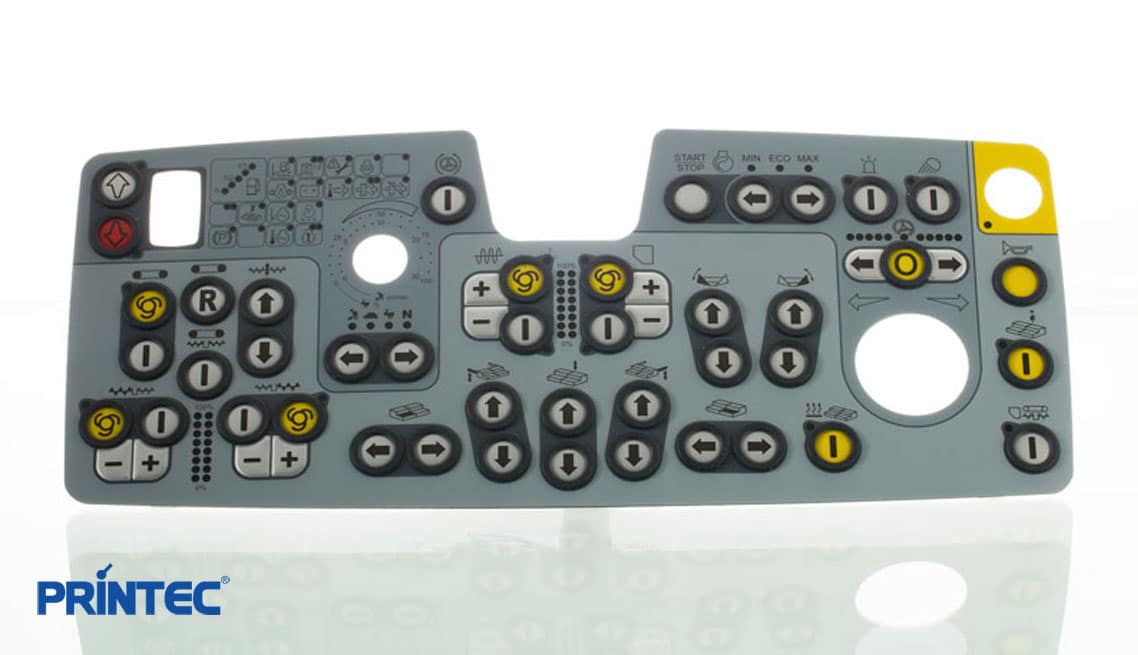Don’t ignore the value of working with a proven membrane switch manufacturer for mock-ups.
Everything About Membrane Layer Change: Comprehending Its Style and Capability
When you consider the control user interfaces in contemporary devices, membrane layer switches typically come to mind. These parts are much more than simply switches; they blend style and functionality effortlessly. Comprehending exactly how they function and what makes them effective can change your perspective on day-to-day electronic devices. However, there are subtleties to their layout and efficiency that you might not know. Allow's discover what sets membrane switches in addition to other control systems.
What Are Membrane Buttons?

Membrane layer buttons can also be tailored regarding shape, dimension, and graphics, allowing makers to develop one-of-a-kind interfaces tailored to specific products. In general, membrane switches play a substantial duty in improving individual experience throughout a vast range of applications.
How Membrane Changes Work
When you push a key on a membrane switch, it activates an uncomplicated yet efficient system. The top layer, frequently made of adaptable material, lowers onto a conductive layer below it. This activity bridges the void between conductive traces, finishing an electric circuit. As quickly as the circuit shuts, it sends a signal to the tool's controller, which translates your input.
You'll discover that the responsive comments differs based on the switch design, providing either a soft click or a much more pronounced reaction. When you launch the key, the membrane layer go back to its original setting, resuming the circuit and stopping the signal. This procedure happens practically instantly, ensuring a responsive individual experience.
Membrane buttons are prominent due to their longevity and resistance to dirt and dampness, making them optimal for various applications, from home home appliances to medical tools. Recognizing this procedure aids you appreciate their prevalent usage.
Trick Components of Membrane Switches
Understanding the essential components of membrane buttons is basic for realizing their performance and style. At the core, you'll discover the visuals overlay, which offers the aesthetic interface for users. Beneath that, there's a spacer layer that separates the circuit layers, making certain that they do not make call until pressed. The circuit layer is where the magic happens; it contains conductive traces that complete the circuit when you press the switch. One more necessary component is the glue support, permitting the button to stick to surface areas securely. The protective layer guards versus environmental factors and put on, expanding the switch's lifespan. Each part plays a considerable role in guaranteeing reputable efficiency and user communication. By understanding these elements, you'll gain understanding right into how membrane switches operate and their significance in various applications.
Materials Utilized in Membrane Switch Over Style
The performance and toughness of membrane switches greatly depend upon the products used in their style. You typically run into polyester and polycarbonate as main substratums as a result of their excellent toughness and versatility. These materials withstand scratches and chemicals, making them optimal for demanding atmospheres.
The conductive layers often use silver or carbon, picked for their reliability and conductivity. membrane switch manufacturer. Silver gives exceptional performance, while carbon is an economical choice. For the overlay, you could consider a matte or shiny coating, relying on your visual demands and customer experience
Make certain to select adhesives that hold up against ecological aspects like temperature level and moisture. Selecting the best products will certainly ensure your membrane layer switch stands the test of time.
Layout Factors To Consider for Membrane Switches
While making membrane switches, it's important to take into account different variables that influence their functionality and user experience. Beginning by concentrating on the format and button size; make specific they're user-friendly and very easy to navigate.
Don't forget the graphic style; clear labeling and shade comparison are considerable for presence. Verify your style accommodates ecological variables, like wetness or temperature level variations, why not check here which can affect navigate to these guys performance. Finally, remember the value of screening prototypes with actual individuals to gather comments and make needed changes. This iterative process aids you fine-tune the design, confirming it fulfills both functional and aesthetic needs properly. By thoroughly thinking about these components, you'll produce a membrane button that improves functionality and fulfillment.
Applications of Membrane Buttons
Membrane buttons are versatile components discovered in numerous applications, from industrial equipment to consumer electronics. You'll see their influence in machines that require long lasting interfaces and in gadgets that take advantage of streamlined layouts. Understanding these applications aids you appreciate the capability and functionality of membrane switches in everyday modern technology.
Industrial Devices Usage
When you're looking to boost the performance of commercial devices, membrane layer buttons use a trusted solution that combines toughness with straightforward design. These switches are perfect for rough atmospheres, offering resistance to dust, dampness, and chemicals. You'll discover them in control panels for producing equipments, a/c systems, and clinical gadgets, where precision and responsiveness are crucial. Their low profile indicates they why not try these out fit flawlessly into various devices, conserving important room while maintaining simplicity of usage. With adjustable graphics and backlighting alternatives, you can create an instinctive user interface for operators, enhancing performance and safety. And also, their long life-span minimizes maintenance expenses, making them a wise financial investment for your commercial applications. Accept membrane switches to streamline your procedures and boost overall efficiency.
Customer Electronic Devices Assimilation
In the domain name of consumer electronics, membrane layer buttons play an important role in enhancing individual interaction and gadget functionality. Membrane layer buttons additionally assure longevity and resistance to dirt and moisture, extending the lifespan of your electronic devices. By selecting membrane switches, you boost not simply the performance however also the style of your tools, making day-to-day communications smooth and delightful.
Benefits and Negative Aspects of Membrane Layer Buttons
While membrane switches provide a range of benefits, they likewise come with some drawbacks that you ought to think about. One significant advantage is their compact style, making them ideal for space-constrained applications.

Membrane buttons can have a shorter life-span compared to mechanical switches, specifically under heavy usage. They can likewise be less tactile, which may affect user responses throughout procedure. Stabilizing these pros and cons will aid you figure out if membrane buttons are the ideal fit for your project.
Often Asked Concerns
How Much Time Do Membrane Switches Typically Last?
Membrane layer switches commonly last in between 5 to ten years, depending on usage and environmental conditions. You'll intend to assess variables like wear, exposure to wetness, and temperature level fluctuations to assess their longevity successfully.
Can Membrane Changes Be Custom-made for Specific Styles?
Yes, you can tailor membrane switches to fit certain layouts (membrane switch manufacturer). You'll have the liberty to choose colors, forms, and formats that match your project's demands, ensuring they blend perfectly with your total visual
What Is the Cost Variety for Membrane Change Manufacturing?
The cost array for membrane switch production generally falls in between $1 and $10 per device, depending on factors like layout complexity, quantity, and materials. You can obtain quotes from producers to find the very best option.

Are Membrane Switches Water Resistant or Resistant?
Membrane layer buttons can be created to be water-proof or resistant, depending on materials used and building and construction approaches. If you need them for wet settings, ensure you specify those requirements during the design process.
Exactly How Do Membrane Layer Switches Over Contrast to Traditional Buttons?
Membrane layer buttons are typically thinner and much more flexible than traditional switches, supplying a smooth design. They're often simpler to clean and integrate, but could not give the responsive feedback you're utilized to with mechanical alternatives.
Verdict
